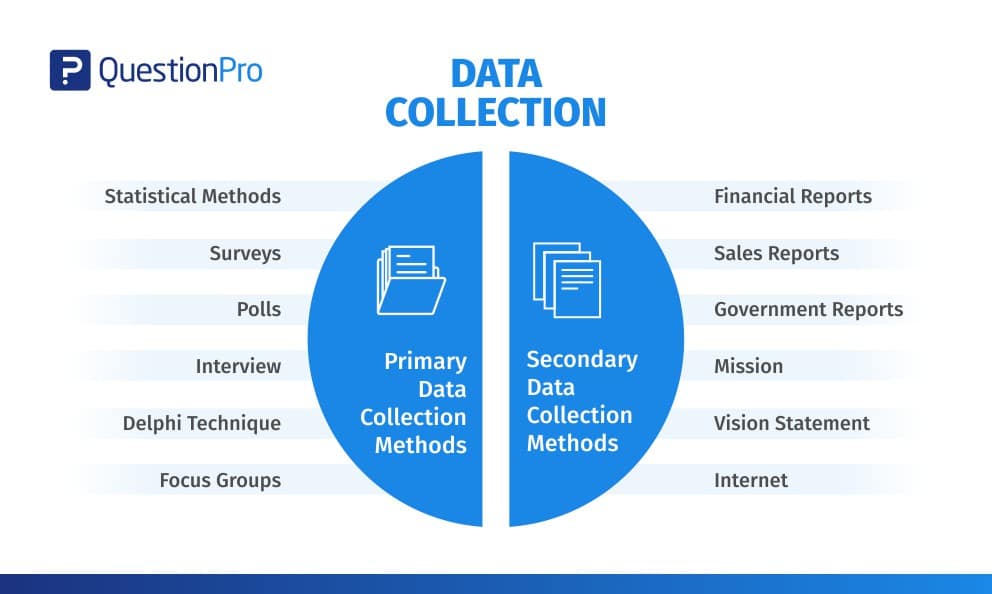

The quantitative data collection method focuses on gathering mathematical, statistical, or numerical data to analyze. The data collection methods are observations, one-to-one interviews, conducting focus groups, and open-ended questionnaires. This type of data can be observed and recorded. The qualitative data collection method involves collecting non-mathematical data. In more detail, primary data collection has two more data collection methods, one is the qualitative data collection method, and the other is the quantitative data collection method. As one has to collect data for the first time on a particular research project, it is quite sturdy and time-consuming. Researchers collect original data for specific research through this procedure. Primary data collection refers to the process of collecting raw data at the source. Let’s discuss these data collection types in more detail. A researcher does the first through first-hand sources and field research, while secondary data is collected by searching through information already collected by another person or party.

The main forms of data collection are primary and secondary data collection. Now, before moving into the different data collection methods and techniques, let’s first see the types of data collection. So that can work as evidence of the claims. Data collection is needed to introduce a new idea, change, or innovation.Data collection encourages a more profound understanding of the subject matter.Another main reason for assembling data is to maintain the integrity of specific research.The right use of appropriate data collection methods reduces the chances of mistakes.Accurate data allow researchers to avoid making uninformed decisions. Data collection is essential to minimize the risk of errors in decision making.Let’s see some primary purposes of gathering data. But there are also many other reasons for data collection. But the primary purpose of fetching data is assisting researchers in making predictions about future trends and expectations. Researchers collect data with the hope of determining specific potential outcomes. Now, let’s see what the reasons behind collecting data are. It focuses on obtaining all the details on a particular subject-furthermore, the data is collected to explain a phenomenon that is used for further hypothesis testing. Let’s start with “what is data collection?.” What is data collection?ĭata collection is an organized process of collecting and analyzing certain information to find solutions for the related questions and examine them. But, first, we will discuss some detailed information about data collection. This article will show you six data collection methods that will help you accumulate proper data for your specific purpose or need. Hence, collecting useful data for a particular context and in a structured manner is now everyone’s concern. Nonetheless, the question remains, how do we know which one is the correct method for getting actual data for a particular need? We also know that there are some data collection methods through which we can get raw data. Document review can also reduce duplication.Īn evaluator may review existing documents for the following reasons: to gather background information, to determine if implementation of the program reflects the program plan, when you need information to help you develop other data collection tools for evaluation and when you need data to answer what and how many evaluation questions commonly collected by other agencies.In today’s world, “information is power.” But, gathering that specific information for a particular purpose efficiently, is one of the major concerns for all. Document review can assist in triangulating findings collected through other evaluation methods, for example interview and observations. The document review process provides a systematic procedure for identifying, analyzing, and deriving useful information from existing documents such as project documents, information on related projects, government records and publicly available statistics. Ministries, government agencies, NGOs, and other organizations often produce valuable reports that you can use to supplement your own data collection. Often information required for an evaluation has already been collected for other purposes.


 0 kommentar(er)
0 kommentar(er)
